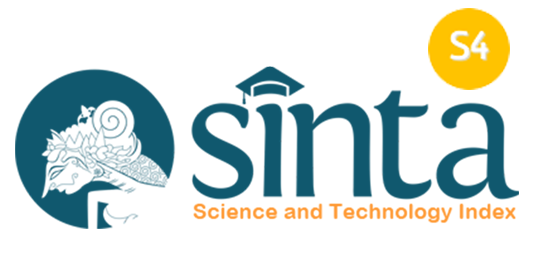THOUGHT STOPPING ENHANCING SELF-ESTEEM OF PEOPLE WITH SCHIZOPHRENIA
Downloads
Introduction: A person who has low self-esteem sees the environment in a negative way and considers it a threat. Schizophrenias patients with negative symptoms generally show a feeling of inferiority, this condition is a problem because of the cause of other problems, such as social isolation. The purpose of this research was to analyze the effect of giving thought stopping to self-esteem people with schizophrenia. Methods : This research uses quantitative approach the method used was the experimental design of pretest-posttest with control design. The population is the patient who was treated at the Custody. Sampling method in this research is by purposive sampling. Total sample is 90 respondents, divided into two groups, Intervention group 30 and control group 60 respondents. Measurement of data with client's self-esteem observation sheets before and after therapy. Results : The result of bivariate analysis was done using t-test obtained by p-value <0,005. There is a significant difference in patient self-esteem in the control group and intervention group after thought stopping. Conclusion: These results suggest there is influence of thought stopping with patient self esteem. Sex, length of illness and treatment history are not confounding factors. It is recommended to use thought stopping as one of the actions of nursing, especially on clients with self esteem problems.
Afari, E., Ward, G., & Khine, M. S. (2012). Global self-esteem and self-efficacy correlates: Relation of academic achievement and self-esteem among Emirati students. International Education Studies, 5(2), 49–57. https://doi.org/10.5539/ies.v5n2p49
Agustratika, & Nasution. (2011). Pengaruh Thought Stopping terhadap Tingkat Kecemasan Keluarga dengan Anak Usia Sekolah yang Menjalani Kemoterapi di RSUPN Dr Cipto Mangunkusumo. In Spesialis Keperawatan Jiwa. Jakarta: FIK UI.
Aliyah, & Denok, S. (2015). Penerapan Terapi Multimodal dengan Teknik Thought Stopping dan Desensitisasi Sistematik untuk Meningkatkan Harga Diri yang Rendah pada Siswa Kelas VIII-E SMPN 4 Pasuruan. Jurnal Bk UNESA, 5(3).
Arshad, M., Muhammad, S., & Mahmood, K. (2015). Self-Esteem & Academic Performance Among University students. Journal of Education and Practice, 6(1), 156–162.
Bint-E Tahir, W., Inam, A., & Raana, T. (2015). Relationship between Social Support and Self-Esteem of Adolescent Girls. IOSR Journal Of Humanities And Social Science, 20(2), 42–46. https://doi.org/10.9790/0837-20254246
Dimitriadou, A. (2014). The Concept of Self-Esteem in Nursing Education and its Impact on Professional Behaviour. International Journal of Caring Sciences, 7(1), 6–11.
Fatkhul Mubin, M. (2009). Penerapan Terapi spesialis Keperawatan Jiwa : Terapi Kognitif pada Harga Diri Rendah di RW 09, 11, dan 13 Kelurahan Bubulak Bogor. Jurnal KePerawatan, 2(2), 28–35.
Febriana, B., Poeranto, S., Kapti, R. E., Ilmu, F., Universitas, K.,
Sultan, I., ... Brawijaya, U. (2016). Pengaruh terapi kognitif terhadap harga diri remaja korban bullying. Jurnal Ilmu Keperawatan, 4(1), 73–84.
Fortinash, K. M., & Worret, P. A. H. (2005). Psychiatric Mental Health Nursing (3 rd). USA: Mosby, Inc.
Kumar, R., Lal, R., & Bhuchar, V. (2014). Impact of social support in relation to self-esteem and aggression among adolescents. International Journal of Scientific and Research Publications, 4(12), 1–5.
Kurniawan, Y., & Sulistyarini, I. (2016). Komunitas Sehati (Sehat Jiwa dan Hati) Sebagai Intervensi Kesehatan Mental Berbasis Masyarakat. INSAN Jurnal Psikologi Dan Kesehatan Mental, 1(2), 112–124. https://doi.org/10.20473/jpkm.V1I22016.112-124
Maheshwari, S. K., & Gill, K. K. (2015). Relationship of Assertiveness and Self Esteem among Nurses. International Journal of Health Sciences and Research (IJHSR), 5(6), 440–449.
Naseer, M., Shabir, G., Umar, H. M., Shabir, S. A., Nadvi, N. A.,
Hayat, A., & Azher, M. (2014). Effects of Social Support on Self-Esteem Amongest the Students of U.O.S Sargodha. International Journal of Academic Research and Reflection, 2(2), 20–29.
Notoatmodjo. (2007). Promosi Kesehatan & Ilmu Perilaku. Jakarta: Rineka Cipta.
Pramujiwati, D., Keliat, B. A., & Wardani, Y. I. (2013). Pemberdayaan Keluarga dan Kader Kesehatan Jiwa dalam Penanganan Pasien Harga Diri Rendah Kronik dengan Pendekatan Model Precede L.Green di RW 06, 07 dan 10 Tanah Baru Bogor Utara. Jurnal Keperawatan Jiwa, 1(2).
Rofiq, A. A. (2012). Terapi Islam Dengan Strategi Thought Stopping Dalam Mengatasi Hypochondriasis. Jurnal Bimbingan Dan Konseling, 2(1), 65–74.
S, E. C., & Handayani, S. (2014). Pengaruh Cognitive Behavioral Therapy (CBT) terhadap Perubahan Kecemasan, Mekanisme Koping, Harga Diri pada Pasien Gangguan Jiwa dengan Skizofrenia di RSJD Surakarta. Jurnal Terpadu Ilmu Kesehatan, 3(1), 41–50.
Sheila L, V. (2008). Buku Ajar Keperawatan Jiwa. Jakarta: EGC.
Srisayekti, W., Setiady, D. A., & Sanitioso, R. B. (2015). Harga-diri ( Self-esteem ) Terancam dan Perilaku Menghindar. Jurnal Psikologi, 42(2), 141–156.
Srivastava, R., & Joshi, S. (2014). Relationship between Self-concept and Self-esteem in adolescents. International Journal of Advanced Research, 2(2), 36–43.
Stuart, & Laraia. (2010). Principle and Practice Of Psychiatric Nursing. St. Louise: L Mosby. Inc.
Stuart, & Laria. (2005). Principles & Practice of Psychiatric Nursing (7th Editio). St. Louise: Mosby.
Suerni, T., Anna, B., & Helena, N. (2013). Penerapan Terapi Kognitif dan Psikoedukasi Keluarga pada Klien Harga Diri Rendah di Ruang Yudistira Rumah Sakit Dr. H. Marzoeki Mahdi Bogor Tahun 2013. Jurnal Keperawatan Jiwa, 1(2), 161–169.
Supriati, L., Keliat, B. A., & Nuraini, T. (2014). Pengaruh Terapi Thought Stopping dan Progressve Muscle Relaxation terhadap Ansietas pada Klien dengan Gangguan Fisik di RSUD Dr. Soedono Madiun. Jurnal Keperawatan STIKES Hang Tuah Surabaya, 3(3), 191–203.
Twistiandayani, R., & Widati, A. (2013). Pengaruh Terapi Tought Stopping terhadap Kemampuan Mengontrol Halusinasi pada Pasien Skizofrenia. Prosiding Konferensi Nasional PPNI Jawa Tengah 2013, 240–242.
Uba, I., Yaacob, S. N., Talib, M. A., Mofrad, S., & Abdullah, R. (2013). Effect of Self-Esteem in the Relationship between Stress and Substance Abuse among Adolescents: A Mediation Outcome. International Journal of Social Science and Humanity, 3(3), 214–217. https://doi.org/10.7763/IJSSH.2013.V3.230
Valizadeh, L., Zamanzadeh, V., Badri Gargari, R., Ghahramanian,
A., Jabbarzadeh Tabrizi, F., & Keogh, B. (2016). Self-Esteem Challenges of Nursing Students: An Integrative Review. Research and Development in Medical Education, 5(1), 5–11. https://doi.org/10.15171/rdme.2016.003
Wakhid, A., Hamid, A. Y. S., Keperawatan, F. I., Indonesia, U., Keperawatan, F. I., & Indonesia, U. (2013). Penerapan Terapi Latihan Ketrampilan Sosial pada Klien Isolasi dan Harga Diri Rendah dengan Pendekatan Model Hubungan Interpersonal Peplau di RS DR Marzoeki Mahdi Bogor. Jurnal Keperawatan Jiwa, 1(1), 34–48. Retrieved from http://jurnal.unimus.ac.id/index.php/JKJ/article/view/911/965
Yosep, I. (2009). Buku Ajar Keperawatan Jiwa (Edisi Revi). Jakarta: PT. Refika Aditama.
Copyright (c) 2020 Sulastri, Andi Thahir, Rohayati

This work is licensed under a Creative Commons Attribution 4.0 International License.
Copyright Notice
1. The journal allows the author to hold the copyright of the article without restrictions.
2. The journal allows the author(s) to retain publishing rights without restrictions.
3. The legal formal aspect of journal publication accessibility refers to Creative Commons Attribution (CC BY).














